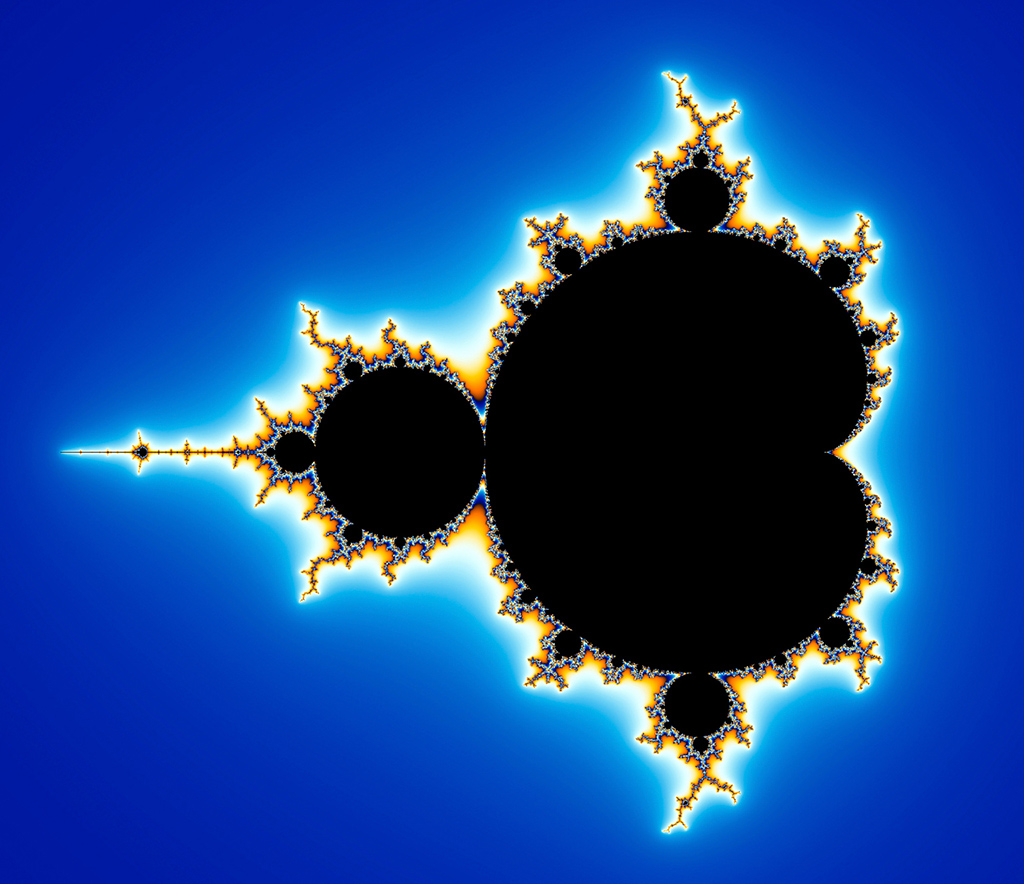
IN CONTEXT
Mathematics
1917–20 In France, Pierre Fatou and Gaston Julia build mathematical sets using complex numbers – that is, combinations of real and imaginary numbers (multiples of the square root of –1). The resulting sets are either “regular” (Fatou sets) or “chaotic” (Julia sets) and are the precursors of fractals.
1926 British mathematician and meteorologist Lewis Fry Richardson publishes Does the Wind Possess a Velocity, pioneering mathematical models for chaotic systems.
Present-day Fractals form part of the field of complexity science. They are used in marine biology, earthquake modelling, population studies, and oil and fluid mechanics.
Belgian mathematician Benoît Mandelbrot used computers to model the patterns in nature in the 1970s. In doing so, he launched a new field of mathematics – fractal geometry – which has since found uses in many fields.
Fractional dimensions
Whereas conventional geometry uses whole-number dimensions, fractal geometry employs fractional dimensions, which can be thought of as a “roughness measure”. To understand what this means, think of measuring Britain’s coastline with a stick. The longer the stick, the shorter the measurement, as it will smooth out any roughness along its length. The British coast has a fractional dimension of 1.28, which is an index of how much the measurement increases as the length of the stick decreases.
A characteristic of fractals is self-similarity – meaning that there is an equal amount of detail at all scales of magnification. The fractal nature of clouds, for example, makes it impossible to tell how close they are to us without external clues – clouds look the same from all distances. Our bodies contain many examples of fractals, such as the way the lungs branch out to fill space efficiently. Like chaotic functions, fractals show sensitivity to small changes in initial conditions, and they are used to analyse chaotic systems such as the weather.

The Mandlebrot set is a fractal generated using a set of complex numbers, and conceals limitless representations of itself at every scale. When visualized graphically, it produces the distinctive shape shown here.
See also: Robert FitzRoy • Edward Lorenz